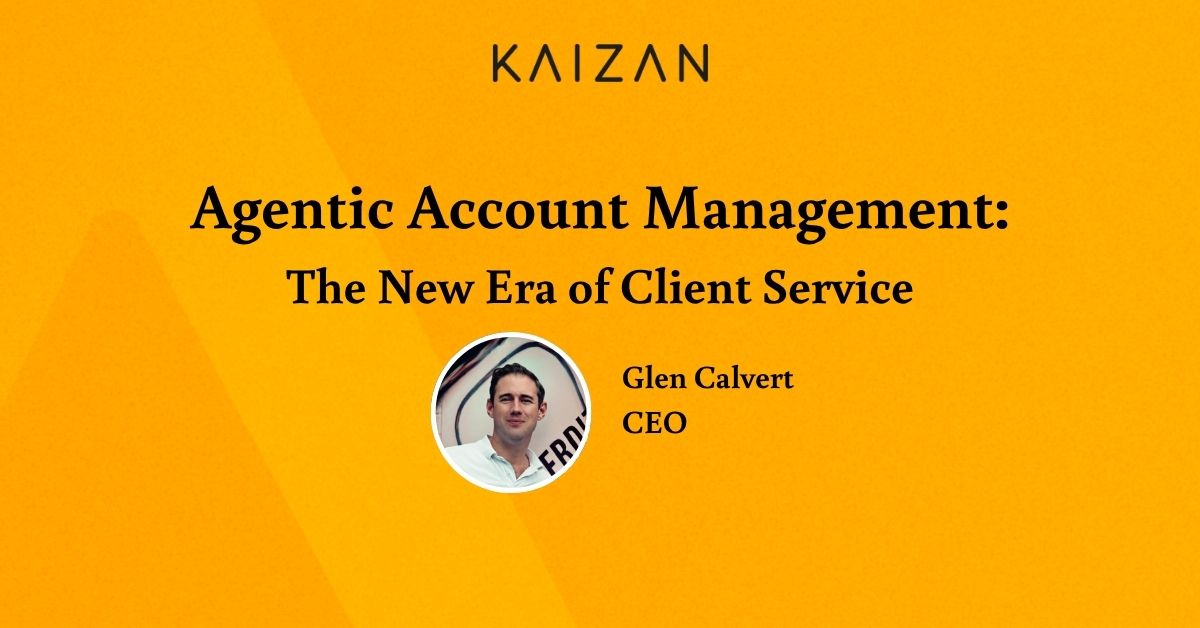A Guide to Managing Client Relationships Remotely

A Guide to Managing Client Relationships Remotely
The ability to remotely manage client relationships has become a critical skill for client success teams.
While remote working and virtual meetings were on the rise before COVID-19, the outbreak of the pandemic rapidly accelerated the move toward remote work. Businesses were forced to adopt remote working practices and many have retained them even as normal life returns. This has had a major impact on the way in which businesses manage their client relationships.

Even for businesses that have steered away from going virtual, long-term changes have been unavoidable. The pandemic has reset expectations of the client journey and many clients now expect the option of remote collaboration. Client success teams have to adjust to this expectation or risk losing business to more flexible competitors.
Some businesses have adjusted without any major disruption but others have had to make significant changes. New working practices are taking hold, and the competition is on to demonstrate the most effective approaches to remote working.
Fortunately, there are a few fundamental steps you can take to effectively manage remote relationships:
- Keep communication channels open.
- Maintain a professional attitude.
- Be clear and concise.
- Take advantage of technology.
- Build trust.
Let’s dig a bit deeper into those…
Keep Communication Channels Open
Remote client management relies first and foremost on making the client feel like they’re going to be heard, and that means keeping communication channels open.
When they’re not seeing you in person, it’s easy for a client to worry about whether they’re really a priority for you and whether their messages have sunk in. Ensuring that you are available to answer any queries or concerns will ease their worries and provide reassurance about the service they’re receiving.
There are a number of ways to do this, such as using email, phone, or video conferencing. The exact method you use should depend upon what the client is comfortable with and what enables smooth communication between each side.
Keeping communication channels open doesn’t mean interrupting your work for every call or answering each email the moment it lands in your inbox. Responding like that can make you seem panicked rather than open, gets in the way of other work, and will mean that tasks for different clients constantly and unproductively interfere with each other.
The real trick to open communication is to set a standard for prompt and realistic responses and consistently stick to it. For example, you might let clients know that you will respond to calls the same day and substantial emails within a week. Once you’ve set a SLA stick with it, and if there are going to be exceptions then explain them. That way clients won’t be worrying about why you haven’t responded.
When you do get in contact, ensure that your communication responds to your clients’ needs and the questions they have asked. Shape your response around their words and their priorities. This shows that you’ve listened.
Don’t just make your communications reactive. Some clients will slip out of contact if you don’t proactively pursue them, and then be unhappy that they haven’t heard from you. Set action items to contact clients on a regular basis, to check how they’re getting on with your products and whether there’s anything you can do to help. This gives you a chance to shape the client journey, ensures communication channels remain effective, and gives uncertain clients the confidence in you that they need to call when things go wrong.
Maintain a Professional Attitude
While it’s important to keep communication channels open, it’s important not to be too open. Regular contact breeds friendly familiarity, which is helpful but shouldn’t go too far. You need to maintain a professional attitude.
This means being careful when conversation strays off topic. Small talk and a personal touch help to relax a client and create a bond between them and your business, boosting client success. But this relaxed attitude can go too far, especially if you misjudge what the client considers appropriate conversation, something that’s all too easy. Keep any informal or personal conversations light and avoid anything that could potentially damage your business’s reputation.
Some specific steps you can take to keep things professional include:
- Avoid gossip: it makes you look petty, and you don’t know what the client thinks about the other people involved.
- When a serious issue comes up, treat it seriously, especially when it’s something that affects the client. Jokes to lighten the mood can wait.
- Avoid arguments. If you disagree on something, wait until things have calmed down, then return to the topic in a later conversation.
- Keep your tone of voice level and respectful.
- Avoid slang.
It’s also important to remember that your clients often get in contact with you at points when they are under a lot of stress. There might be a big project in the works or a problem with your product that they’re trying to overcome. Even if you can’t see a problem, that doesn’t mean it isn’t there. Be understanding and patient, and if the client seems curt or short-tempered then work on the assumption that it’s a response to circumstances, not a reflection of their character, and consider how you can help them get past whatever the problem is.
Not every client journey goes smoothly. Sometimes there will be conflicts which make it hard to retain your calm, but it’s more important than ever to be professional at these times. Read up on approaches to conflict resolution and be ready to face and resolve those awkward moments rather than leaving them to fester.
As a team manager, it’s important to ensure that your team have the skills to do this correctly. Arrange training in communication skills and client management coaching: even the best team members will have something to learn.
Be Clear and Concise
When dealing with an individual moment of communication, it’s important to be clear and concise.
It can be tempting to talk a lot. It’s a habit we all have from time to time, as a way of retaining control of the conversation. It’s a particularly easy one to slip into if you’re not sure whether a client has understood you, because saying more instinctively feels like a way to get through.
But where communication is concerned, less is often more. Get your message across as concisely as you can, then leave space for the client to respond, whether that’s a pause in a video call or waiting for a reply to an email. That space gives the client time to process what they’ve heard, to identify gaps in their understanding, and to ask you for clarification.
That request for clarification is particularly important. If you keep adding more details, they might not be the relevant ones and might even muddy the client’s understanding. Waiting to find out what they want to know lets you get across more relevant information in fewer words, focusing on what matters to the client.
Avoid jargon and technical terms as much as possible, especially those the client may not be familiar with. We instinctively reach for these words and phrases to show that we understand a topic, but unless the person listening understands them in exactly the same way, they get in the way of communication. Clearer, simpler terminology leads to better understanding.
While being concise is good, it’s also important not to go too far. Make sure that you provide your clients with all the information they need, without bombarding them with too much information at once. If necessary, spread information out across multiple meetings, so that they don’t have to absorb it all at once, and put the most important information at the beginning and end of conversations, when it’s most likely to be taken in.
Take Advantage of Technology
A number of different technologies can be used to help manage remote client relationships, and it’s good to make the most of these.
Video conferencing, the big growth market of the pandemic, allows you to have meetings without the cost and hassle of travel. You can use it not only to replace meetings you would have had but to increase your contact with clients, using calls to improve relationships. Find out which video apps your clients are familiar with and try to work with those, as this will make things easier and more comfortable for them.
Online chat is no substitute for meetings and emails but can be a useful addition. It’s briefer and less formal than emails, and its asynchronous nature means that you don’t have to be there to answer a query straight away. It’s a great way to show that you’re accessible and to deal with small, regular queries.
Project management tools are invaluable for planning and managing your relationships with individual clients. Along with other planning and scheduling software, they can be used to automate a lot of communications and client management, to reduce your workload and ensure that important action items aren’t forgotten.
If you’re looking for something more advanced, then conversation intelligence tools also have a lot of advantages. They can be used to spot patterns in your communication with clients, to better understand their needs, and even to suggest action items and issues to follow up. Sometimes, the key to greater client success is letting your technology act as your assistant.
Whilst some businesses may be reluctant to use these technologies, they can be extremely beneficial in helping to maintain communication and collaboration, making your work more productive and improving client relationships.
Build Trust
One of the most important things you can do when managing client relationships remotely is to build trust.
Trust is important in any working relationship, but it’s particularly important when remote work is added to the mix. The client doesn’t get the reassurance that comes with in-person encounters, and whatever they rationally think about remote working, being unmoored from in-person interactions can be unsettling. A strong sense of trust helps to overcome this.
The best way to build trust is to be honest and transparent with your clients about everything you’re doing that’s relevant to them. This doesn’t just mean what’s happening on their contract, but the wider perspective on your business’s plans and operations. They need to know what you’re doing and where it’s going, so that they can judge how it might affect them.
It’s also critical to deliver on your promises and meet the expectations you set. That way, you prove to the client that you can be taken at your word. This isn’t just about meeting expectations but about setting them. If you can’t complete tasks, or if the timeframes clients ask for are unrealistic, then be upfront about that. It’s better to have an awkward conversation at the start about why you can’t do something than to face an upset response later about why you didn’t do it.
If you can build trust with your clients then you’ll be in a better position to maintain a remote working relationship.
Clients who trust you, who know they can communicate with you, and who have seen how professionally you operate are more likely to keep using your services. Remote working needn’t undermine client relationships. Instead, you can use the opportunity to evaluate your own communications and build a stronger, more stable, and ultimately more profitable relationship.



